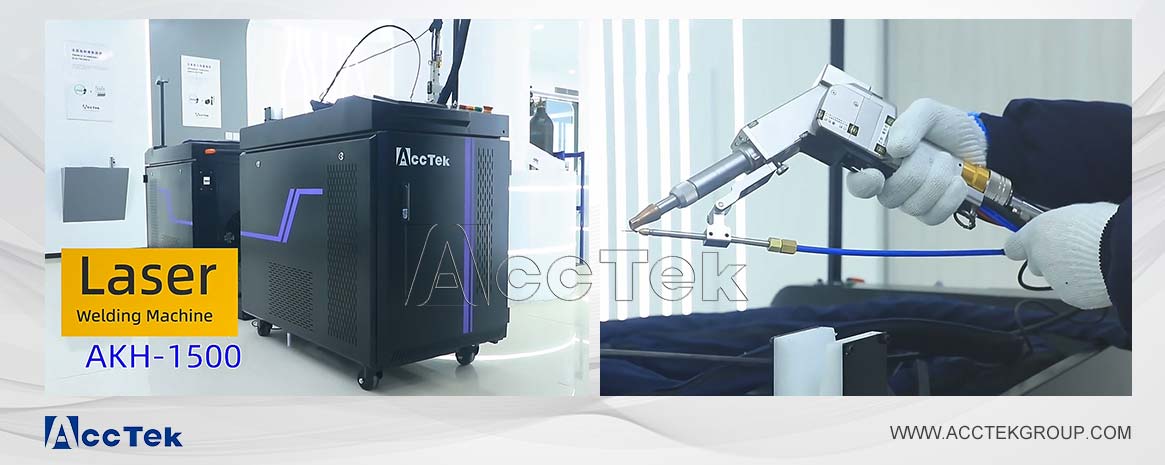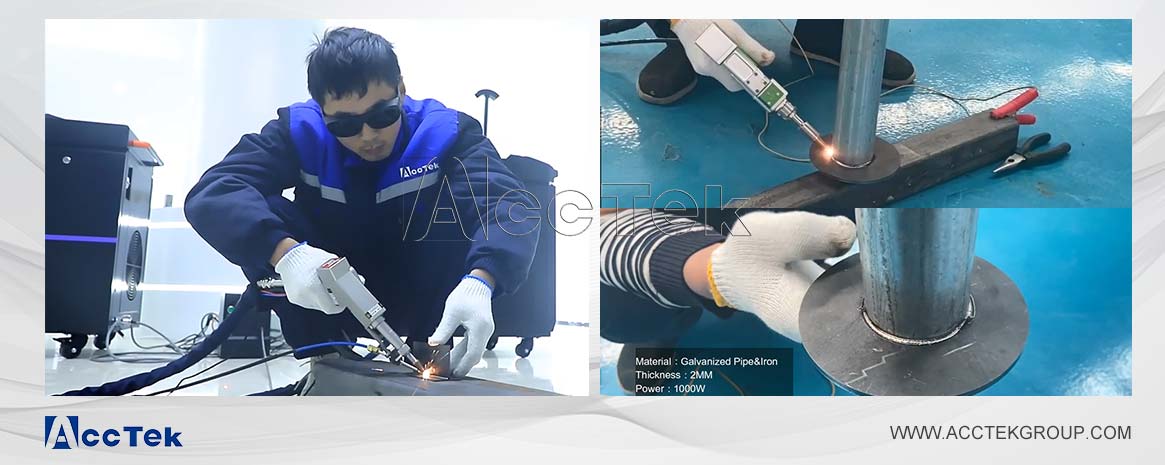How to use a handheld laser welding machine
![[field:title /]](https://www.acctekgroup.com/templets/youben/images/shijian.png)
![[field:title /]](https://www.acctekgroup.com/templets/youben/images/zuozhe.png)
![[field:title /]](https://www.acctekgroup.com/templets/youben/images/cishu.png)
This article will provide a comprehensive overview of how to use a handheld laser welding machine, covering everything from setup to maintenance.
Handheld laser welding machines are revolutionizing the welding industry with their precision, speed, and versatility. They are ideal for a variety of applications, from small-scale repairs to large industrial projects. This article will provide a comprehensive overview of how to use a handheld laser welding machine, covering everything from setup to maintenance.
Understanding the Basics
Before using a handheld laser welding machine, you need to understand its basic components and functions. A typical handheld laser welding machine consists of the following parts:
Laser Source: Generates the laser beam used for welding.
Handheld Welding Head: The tool through which the laser beam is directed onto the workpiece.
Control System: Manages the operation of the machine, including power settings and beam parameters.
Cooling System: Keeps the laser source and other components at optimal temperatures to prevent overheating.
Protective Enclosure and Safety Features: Ensures user safety by preventing exposure to harmful laser radiation.
Safety Precautions
Safety is paramount when using a handheld laser welding machine. Here are essential safety precautions to follow:
Wear Protective Gear: Always wear laser safety glasses, gloves, and protective clothing to shield yourself from laser radiation, sparks, and hot metal.
Ventilation: Ensure adequate ventilation in the workspace to avoid inhaling fumes generated during welding.
Fire Safety: Keep a fire extinguisher nearby and ensure the work area is free from flammable materials.
Training: Only trained and authorized personnel should operate the machine.
Setting Up the Machine
Proper setup of the handheld laser welding machine is beneficial for achieving the best results. Follow these steps for a successful setup:
Position the Machine: Place the laser welding machine on a stable surface, ensuring it is secure and won't move during operation.
Connect Power Supply: Plug the machine into a suitable power source, ensuring the voltage matches the machine's requirements.
Install Cooling System: If the machine uses an external cooling system, connect it according to the manufacturer's instructions and ensure it is filled with the appropriate coolant.
Check Laser Source: Verify that the laser source is properly connected and calibrated. Adjust settings as needed based on the material and thickness of the workpiece.
Prepare Workpiece: Clean the workpiece to remove any contaminants such as oil, rust, or paint that could affect the welding quality.
Operating the Machine
Once the machine is set up, follow these steps to operate the handheld laser welding machine:
Power On: Turn on the machine and allow it to initialize. Follow any startup procedures outlined in the user manual.
Select Welding Parameters: Use the control system to select the appropriate welding parameters, including laser power, pulse frequency, and beam diameter. These settings will vary based on the material and desired weld quality.
Position the Welding Head: Hold the handheld welding head securely and position it at the starting point of the weld. Maintain a consistent distance between the welding head and the workpiece.
Start Welding: Press the trigger or foot pedal to activate the laser. Move the welding head steadily along the seam, ensuring consistent speed and distance to achieve a uniform weld.
Monitor the Process: Continuously monitor the welding process, adjusting parameters or position as needed to maintain weld quality. Use the machine's display or external monitoring tools to check for any irregularities.
Post-Welding Procedures
After completing the welding process, follow these steps to ensure safety and maintain equipment:
Power Down: Turn off the machine and disconnect it from the power source.
Inspect the Weld: Examine the weld for defects such as cracks, porosity, or incomplete fusion. Use appropriate inspection tools like magnifying glasses or ultrasonic testers if necessary.
Clean the Work Area: Remove any debris or residue from the work area. Properly dispose of any hazardous materials according to local regulations.
Maintain the Equipment: Regularly clean and inspect the handheld welding head, laser source, and cooling system. Replace any worn or damaged components to ensure optimal performance.
Tips for Effective Laser Welding
To achieve the best results with a handheld laser welding machine, consider the following tips:
Consistent Speed and Distance: Maintaining a consistent speed and distance between the welding head and the workpiece is crucial for a uniform weld. Practice on scrap material to develop a steady hand.
Proper Material Preparation: Ensure the workpiece is clean and free from contaminants. Use appropriate cleaning methods like sandblasting or chemical cleaning if necessary.
Optimal Settings: Experiment with different laser settings to find the optimal parameters for your specific application. Keep records of successful settings for future reference.
Cooling Management: Monitor the cooling system regularly to prevent overheating. Ensure the coolant levels are adequate and the system is functioning properly.
Troubleshooting Common Issues
Here are some common issues that may arise during laser welding and how to troubleshoot them:
Inconsistent Welds: Check the stability of the welding head and ensure consistent speed and distance during operation. Adjust laser settings if necessary.
Overheating: Verify the cooling system is functioning correctly. Check for blockages or leaks and ensure adequate coolant levels.
Laser Beam Issues: If the laser beam is weak or inconsistent, check the alignment and condition of the laser source. Clean or replace any damaged optics.
Maintenance and Storage
Proper maintenance and storage of your handheld laser welding machine will extend its lifespan and ensure reliable performance:
Routine Maintenance: Follow the manufacturer's recommended maintenance schedule. Regularly clean and inspect all components, replace worn parts, and update software or firmware as needed.
Storage: Store the machine in a clean, dry environment. Protect it from dust, moisture, and extreme temperatures. Cover the machine when not in use to prevent contamination.
Using a fiber laser welding machine can significantly enhance your welding capabilities, offering precision, speed, and flexibility. By following the steps outlined in this guide, you can ensure safe and effective operation of your machine. Remember, practice and proper maintenance are key to achieving the best results and extending the life of your equipment. With these skills, you'll be well-equipped to tackle a wide range of welding projects with confidence and efficiency.
Product Directory
Copyright © Jinan AccTek Machinery Co.,Ltd


